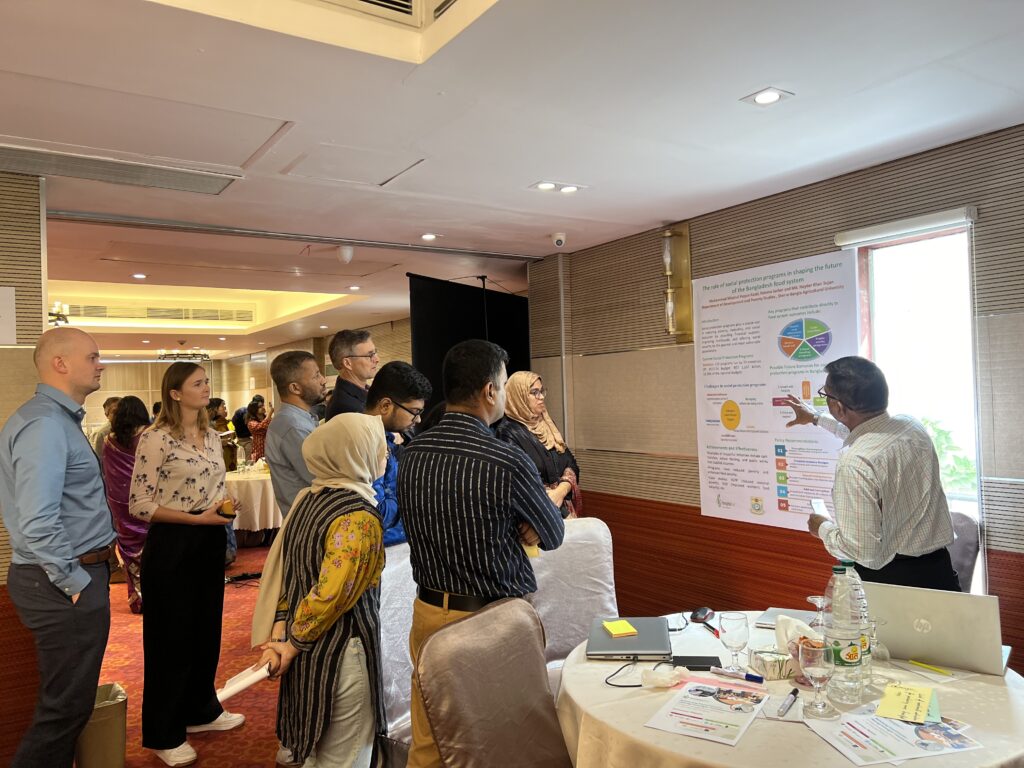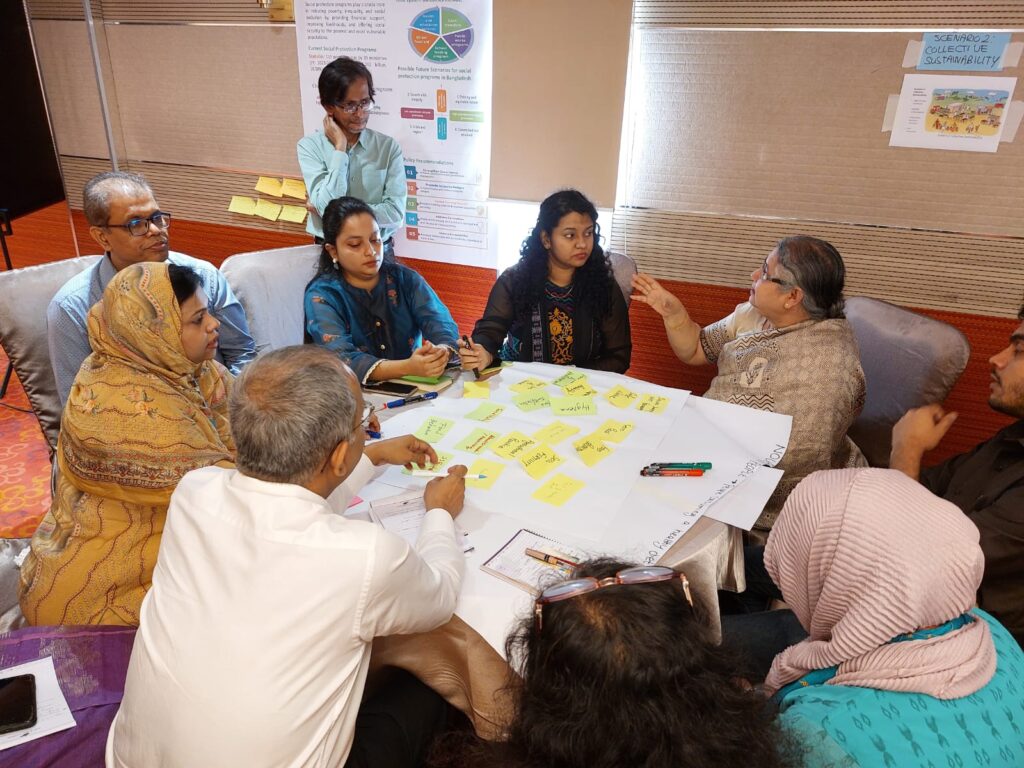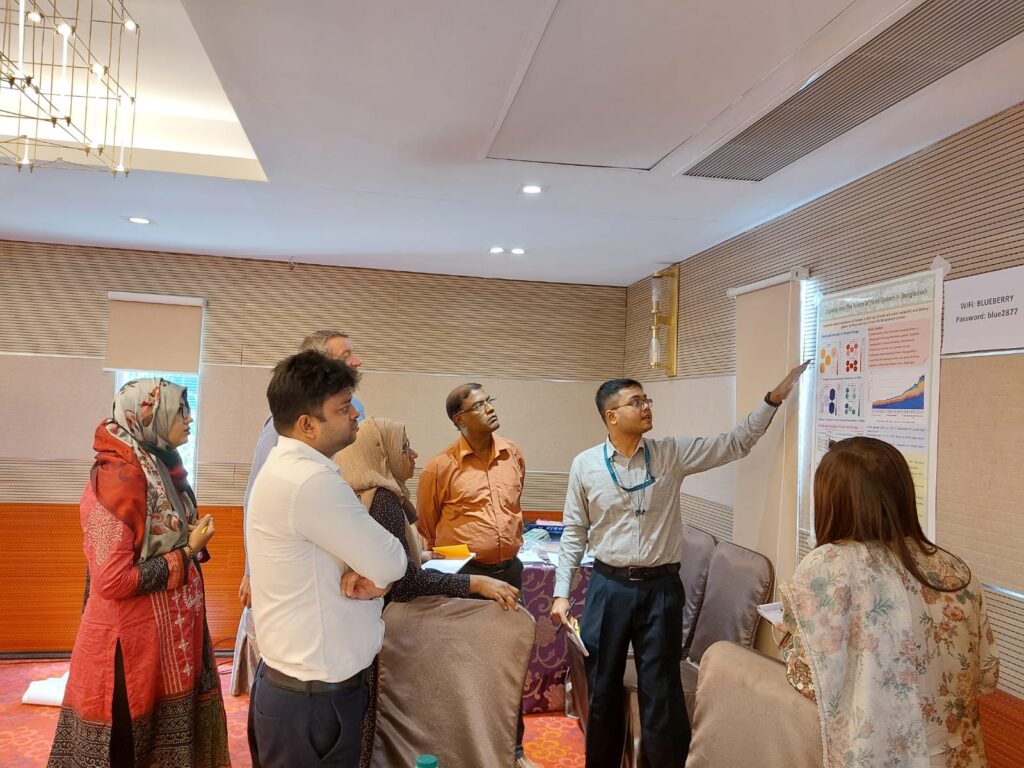By Zoe Barois
Like many other countries, Bangladesh is working to develop it’s Food Systems Transformation Action Plan. This will be presented during the United Nations Food Systems Summit Plus 4 Stocktaking event. On November 6 and 7, Foresight4Food collaborated with GAIN Bangladesh to host a workshop on how foresight could contribute to the development of the Action Plan.
If transforming food systems were easy, it would have been done! But it’s not. Discussions dug into deeper questions about HOW change can be brought about and the implications of this for action in Bangladesh.
The participatory and dynamic workshop brought together policymakers, researchers, youth leaders, key UN organisations and members of the private sector. The workshop served two purposes, first to help clarify directions for the Action Plan, and secondly, to take forward the work on using foresight to help drive food systems change.
Discussion during the workshop focused on the five commitment pathways:
- Nourish all people
- Boost Nature-based Solutions
- Advance Equitable Livelihoods, Decent Work & Empowered Communities
- Build Resilience to Vulnerabilities, Shocks and Stresses and
- Accelerating the Means of Implementation
Validating scenarios for the future of food systems in Bangladesh
It was great to engage in discussions around four visual future scenarios. These were developed using rich pictures during a lively multistakeholder event in June earlier this year. Future scenarios are an excellent way to open discussions around what different stakeholders see as a desirable future. Interestingly, these do not always align as the implications would vary depending on what outcomes you’re seeking. At the end of the day, a poor farmer will desire different things when compared to a corrupt businessman!
The scenarios displayed different outcomes based on these uncertainties:

Equity – Would there be high or low levels of equity?
Climate resilience – we all know that climate change is happening, but whether Bangladesh will have high or low climate resilience is definitely in question
Healthy food consumption – Would people in Bangladesh be eating traditional diets or would they follow a diet that resembles something like a North American diet, something seen in many parts of the world.
Business structure – would Bangladesh have a diversified or consolidated business structure, dominated by a few large conglomerates
Creatively naming these scenarios helps convey the messages. So we had a fun exchange where groups came up with poetic Bangladeshi names to better describe the scenarios. Part of the validation will be to update these, helping spur action towards the most desired and away from the least desired future.
Unpacking five critical issues
Key issues blocking progress towards food systems change in Bangladesh relate to:
- The cost of a healthy diet in addressing malnutrition
- Climate resilience
- The role of social protection programmes in shaping food systems change
- Fruit and vegetable production
- Land use change and dietary patterns
These key themes were the result of a longer participatory process that emerged from the food systems map of Bangladesh. Diving into these topics, FoSTr’s five research partners shared their work on the key trends, challenges, and opportunities within each theme. Exploring these themes using a future lens can help clarify desired directions of change.
The power of causal loop mapping
How often do you get policymakers, youth and researchers around one table, heavily immersed in discussion using sticky notes and flip charts? My response: not often enough! This combination of actors is rarely seen but proves oh so valuable in uncovering insights previously hidden from each sector. The tool casual loop mapping, may be familiar to some. It’s a systems thinking tool where the interconnections between elements are mapped and the direction of causality identified. It’s a great way to map out the elements within a system and identify levers of change – small actions that lead to a large impact. For each of the commitment pathways, this casual loop mapping was performed. Insights like forming alliances between farmers and entrepreneurs to boost sustainable farming practices, or using the power of advertising to improve healthy food consumption and inspire healthy lifestyles were uncovered.



Reflections
Whilst having many people come together who don’t usually converse – the so-called ‘breaking the siloes’ is a huge achievement in itself, the task of writing yet another policy document looms above our heads. Everyone in the room has appeared here for a reason – which I hope is to create the change we need, a future that we all desire. After such positive discussions and recognition that we need to act – and act now, the fear I have is we will all fall into the same trap. The trap of being consumed by our busy agendas and becoming frustrated that yet another policy document has to be produced. Leading to un-actionable and hugely categorised actions. We don’t want this Plan of Action to become another document that has great suggestions but continues to lack the HOW. Let us think about how will these actions be implemented.
Foresight helps us to keep the bigger picture in mind, where do we want to go and where do we want to be in the future? Let’s use this thinking to help us prioritise and select key activities to implement. Working together to do so.